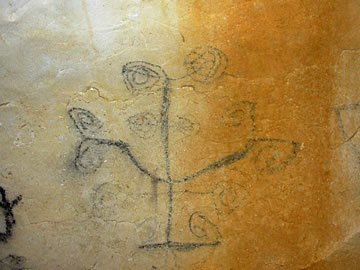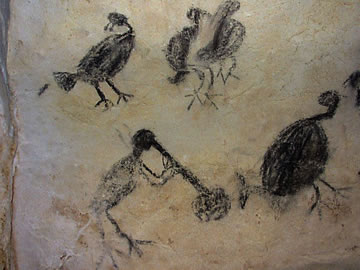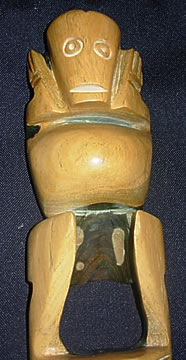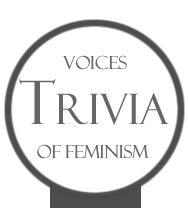Canoeing our Way back to the Divine Feminine in Taíno Spirituality
Marianela Medrano-Marra
When we see with one eye, our vision is limited in range and devoid of depth. When we add to it the single vision of the other eye, our range of vision becomes wider, but we still lack depth. It is only when both eyes see together that we accomplish full range of vision and accurate depth perception.
– Gerda Lerner
The valley in which I was born is a tiny place. The suffocating embrace of its smallness drew out the need to expand beyond the circle of its mountains. The actual village was no more than 4 miles wide and deep. The constriction or, at least what felt like constriction, grew invisible wings on me. I learned to fly beyond the circle of mountains braided in a perfect hug. In adulthood, I have come to realize that somehow people in the valley understood the metaphor of the hugging mountains and imitated them, by leaning on each other to survive the inhospitable scarcity often brought about by the implacable hands of nature and the ill attention of the government.
The name of my birthplace is Copey, which in Taíno or Arawak language means “flower.” It was in Copey where the seeds of my academic work were first planted. There I was drawn to the way of my ancestors, inscribed in day-to-day social practices, and even in our childhood games and backyard “expeditions” where we would dig out Taíno ceramics that we used as our toys, unknowingly touching a part of the fabric of who we were as a people. Copey is located in La Linea Noroeste, the northwest region of Quisqueya, today the Dominican Republic, where nature sent her unmistakable, assertive message to keep us attuned to her turning cycles and her potent force. There, I learned the meaning of interdependence by watching it unfold in the daily interactions of people.
People in the valley would gather together in juntas or convites, a kind of reciprocity practiced among the campesinos or country people, where both men and women came together to work somebody’s parcela or orchard, until the land of each participant was tended. This practice reinforced the idea that the “I” does not exist without the “we.” The aftermath was some sort of butterfly effect; each individual got what he or she needed without monetary exchange, or distinction of gender. Well into the late 1960s the concept of paid labor was foreign to the simple people of Copey. During harvest times in the valley they would exchange goods so everyone had a little of everything. Pre-colonial societal practices on the island were primarily interdependent. “One for all and all for one” seems to have been the motto. In learning about the Taíno's way of living and agricultural practices, I recognized their influence on me and, most importantly, how women’s contributions were tied to the success of these practices, and how far away from the land colonization and industrialization subsequently situated women. The Goddess principle of reciprocity was clearly inscribed in the Taíno’s social practices.
It was not until 2005 that I understood the meaning of the metaphor of the hugging mountains in my life. I was canoeing on the Housatonic River, surrounded by hugging mountains dressed in multicolor foliage, when I had an experience that broke me wide open. An experience that reconnected me with my essence.
While in ecstasy, amazed at the foliage reflected in the water, my body was overtaken by a knowledge that could not be put into words. I felt my body merging with the water and the surrounding mountains, the colors, the water, each leaf, and I could not tell where one started and the other ended. I found myself singing the name of Taíno Chief Anacaona, as if an invisible hand were orchestrating my singing. My body and her name dove into a synchronistic movement that defied any possible description. I was overtaken by a sense of bliss. I interpreted the experience as Anacaona’s invitation to reclaim her name, forgotten in the history, despite her presence of great magnitude in the Taíno culture. She was the chief of the Xaragua kingdom or cacicazgo. Her kingdom was the heart and core of the entire island, where social gatherings and Areítos, ceremonial rituals that included dancing, drumming, rattling and chanting took place.

Taíno life tree, from a cave in San Cristobal, Dominican Republic.
Photo by Marianela Medrano-Marra
In the Litchfield hills, miles and miles away from my native land, I had a sensation of being transported back to Anacaona’s times and to the valley of Copey. With my body as filter of a great inner knowing and spiritual connection, Anacaona’s call shifted my perception. I was indeed broken open, ready to define the destiny of my life as a scholar and keeper of the Taíno tradition. It was then and there I started revising and recomposing the story I have told myself of me as a woman, writer and researcher.
Despite the always cherished company of my husband, that afternoon in the Housatonic River I felt profoundly alone and, at the same time, profoundly connected with everything in my surroundings. My body experienced a knowledge that cannot be put into words, only experience and sense could translate it. Such a profound rediscovering of my intuition helped me realize that something inside me was transformed, and that the transformation was inscribed in my body at a cellular level.
Throughout my research I re-discovered what I had forgotten, that Taínos lurk longingly beneath the water surface, waiting for their dispersed children. Taíno archetypes call for a reconnection with nature; they lure us into our essence. Only when we quiet the mind, open the body, can the message be received. Anacaona’s call was an invitation to study Taíno spirituality, which was lost in the patriarchal legacy of colonization. The word Taíno means “good people” in Arawak. Chief Anacaona called me and invited me to paddle my way back to the Taínos, who themselves navigated by canoe. I got the metaphor immediately; it was through water that I heard the call to go back. I have shared this experience many times, and each time I write it down or verbalize it, I see more and more where the canoe was really taking me: into a navigation of the spirituality of my Taíno people. That is the commitment of my scholarship: to restore the sense of wholeness of our spiritual practices. My interest as a scholar is to examine whether the assumption and knowledge of a Divine Feminine in the Taíno culture can empower Dominican women, and if a similar culture-specific empowerment can be translated to other women across cultures.
As a child I witnessed many juntas as they marched in caravan to la bahia de Sancié where my father’s tobacco and yucca plantations were. My desire to one day visit Sancié wedded me to patience and perseverance, two necessary qualities of effective writing and quality scholarship. In my imagination, each day at dawn, I would fly over the mountains to catch cangrejos (crabs) in the manglares or mangroves, and the crabs would come to my hands with the humility of a domestic pet. I was too young then to go to Sancié.
Migration and adult responsibilities have distracted me from physically going to Sancié, but not from the knowledge that a good story can keep me alive and thriving. The stories I tell myself as a scholar and writer in the field of Goddess studies speak about the transformative power of memory and the importance of revising history—most especially of the importance of reclaiming what has been lost in the telling.
Through research I go back to the past to redefine the present. Taínos had an oral tradition; telling stories was important to the ancestors, as it was how they were able to conserve the essence of our culture. Taínos, while not the only inhabitants of Quisqueya, were the most developed and organized indigenous group, which perhaps accounts for why their cultural practices last to this day. I take it upon myself to tell their stories, sometimes through academic scholarship, and other times, literally through the flight of my imagination in the form of poems.

Images from Taíno cave, San Cristobal, Dominican Republic.
Photo by Marianela Medrano-Marra
The genesis of the Taíno people can be traced back to the union of a God named Yucahu Maorocoti and a fertility Goddess named Atabey Yermao-Guacar-Apito-Zuimaco (multiple names signify her importance). Other female Taíno deities are Itiba Cahubaba, Mama Jicotea or Caguama, Guabonito, and Guabancex. During my visits to Taíno ceremonial sites in the Dominican Republic, I was able to see how my ancestors left in those caves their rubrics, indelible traces of their communion with nature and their holistic approach to life in general and to spirituality in particular. Visiting the caves was a journey into the core of ancestral spirituality, a journey that lit up the eyes of my inner child, still gazing up at the chain of mountains in Copey, dreaming to go to Sancié, to the mangroves and the blue waters where the spirit of Anacaona dwells.
My study of Taíno spirituality has revived archetypes and myths from my childhood. For instance, the archetype of la Ciguapa, a Taíno trickster of liberation and freedom, represented as a female figure with long hair dragging along the earth and feet pointing backwards, has greatly illuminated the aim of my research. La Ciguapa’s feet were backwards to cover her tracks so nobody could follow her.
In the same sense, La Ciguapa is a great metaphor for the way scholars of Dominican women’s studies very often have to work their way into the scholarship. Dominican history, with very few exceptions, has been told primarily by men invested in perpetuating patriarchy and therefore omitting the lines in history where women’s contributions are palpable. The pre-Columbian Taíno women left behind art and artifacts that indicate they were key figures in their society. Most historians have failed to highlight women’s influence in the Taíno world, a failure that has translated into a modern society that, for the most part, continues to deny women their place in Dominican political, social, and economic development.

Atabeyra image
When I work with women I present the archetype of La Ciguapa to illustrate a feminine symbol that can translate into political and spiritual consciousness. Most often, the women discuss the archetype, and through writing, find and develop a resonance with her. La Ciguapa, like many of the women I work with, was forced into “internal exile.” She goes into the wilderness to restore her sense of self. Expelled from society, she, like the women I work with, is forever looking for a (political) way back. Her strategy, when she feels persecuted, is to point her feet backward while she moves forward, so nobody can find and harm her. As Ciguapas, (tricksters), women have the capacity to stand at the threshold of awareness and insight, to penetrate the mysteries of the world (spiritual consciousness). La Ciguapa represents both transformation (moving forward) and safety (the backward feet offering protection in the wilderness).
My scholarship is an invitation to go back to our roots, to our genesis, back to the Great Mother Atabey Yermao-Guacar-Apito-Zuimaco, to Itiba Cahubaba, Mama Jicotea or Caguama, Guabonito, and Guabancex, to La Ciguapa, to the Great Father Yucahú Vagua Morocoti. In so doing we can reunite the two basic energies from which we sprang. My scholarship does not attempt to deny men in order to empower women; nor does it propose women as victims. It agrees with Lerner’s quote at the beginning of this essay. The way scholarship can bring about transformation is by adding the female vision to the male, to restore depth and range of perception. My work in the field of Goddess Studies invites myself and other women to reclaim our place as co-creators of the world—to be Ciguapas, female tricksters seeking internal balance and reclaiming our innate ability to be wild and highly intuitive.
About the author
Marianela Medrano is a Dominican writer and psychologist living in Connecticut. She offers workshops and readings in various venues. In her workshops, she combines literature, psychology, and her research on the Sacred Feminine to help others find new ways of knowing the wholeness of human beings. Her publications are: Oficio de Vivir (1986), Los Alegres Ojos de la Tristeza (1987), Regando Esencias/The Scent of Waiting (1998) and Curada de Espantos (2002).
Join our Trivia - Voices of Feminism group on Facebook

